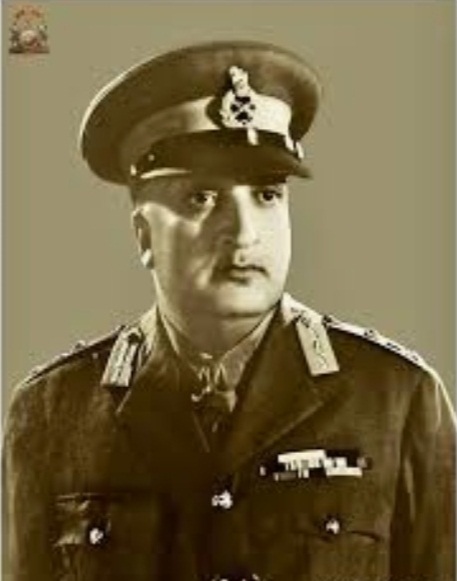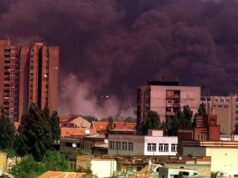Maharaja Hari Singh: An epitome of ‘Rajdharma’
It is rulers like HH Maharaja Hari Singh who are born once in a life time of a nation state’s history that emblazon their stamp of unequivocal patriotism which has few equals even to this day

By Colonel Satish Singh Lalotra
Seldom comes a time in the annals of a nation -state when so many people owed so much to a single man for their deliverance from the drudgeries of poverty, illiteracy, obscurantism, obduracy and such like impediments that have few equals in recorded human history as has been associated with HH Maharaja Hari Singh the last ruler of princely state of J&K. Figuring as one of the tallest and most exalted rulers of princely India, Maharaja Hari Singh carries the cross of British calumny that had metamorphosed after Independence into a witch hunt which saw him banished from his own home state. Refusing to Sacrifice at the altar of his firm convictions of ‘Rajdharma’ the Maharaja’s stand against the British perfidy of forcing him to sign the instrument of accession despite a clear and present danger in the form of tribal invasion has few equals in independent India.
On the occasion of his 130 birth anniversary that happens to be today on 23 September it would be worth the space in this column to have a look at the Maharaja’s actions as a ruler of J&K that cast the die changing eventually his fate as also of his state and eventually of India in an inalienable way. The times that accompanied the growing up years of Maharaja who having been born on 23 September 1895 at Amar Mahal in Jammu, were turbulent to say the least. It was the height of the ‘Great Game’ when both the super powers of that time the Victorian England and Czarist Russia had cast their covetous eyes on the northern most part of the Sub-continent, the state of J& K which fueled their aspirations to have a much larger pie of the so called ‘Jewel of the crown’ i.e. India.
Maharaja Hari Singh was the fourth and the last Dogra Monarch of the erstwhile state of J&K with his rule lasting from1925 till 1947 under the shadows of a tumultuous historical upheaval which would have shaken a mere mortal, but saw him rise to the occasion stoically. Having been born to Raja Amar singh and Bhotiali Chib the only surviving child of his parents, by quirk of fate he was to take over the reins of J&K following his uncle Maharaja Pratap Singh’s death who was an issueless monarch in 1925 inheriting the highest role in a monarchy at a time when the very institution was being questioned despite having absolute power vested upon him by virtue of his royal position, he had kept his eyes and ears very close to the ground to sense the subtle changes in times which were nuanced in a way that only a ruler with genuine empathy towards his subjects could pass muster.
His kinship was rooted in the age-old concepts of governance that are still enshrined in the epics of Hindu religion of the likes of Ramayana & Mahabharata which espoused the equality of all religions and races as also following assiduously the concept of ‘Raj dharma’ (concept of ruler’s duty and morality). Hence his governance laid stress upon his epochal statement on the day of his taking over the reins of J&K with the words –quote “All religions are mine and justice is my religion’—unquote. Unfortunately the subsequent events leading to the ‘Tribal raid’ in October 1947 on J&K belied the same concept of universality of all religions in his subjects (read his Muslim troops) , who defected to the enemy side taking the alibi of ‘Muslim Ummah’ as their sine quo non for their defection and changing loyalties at the last moment.
The Dogra ruler was personification of a modern administrator who had his outlook built on the edifice of his early education being mentored by the British authorities. Knowing fully well even during Maharaja Pratap Singh’s rule that he being without any direct lineage ( heir) the crown that would embellish the person after the Maharaja’s death would be of his nephew prince Hari Singh’s made the British groom the ‘Heir apparent’ in a way that would do their bidding when the appropriate time came . That the shape of things as they evolved over a period of time didn’t stand to the British’s game plan is an altogether different thing. They sent him to the ‘Imperial cadet corps ‘at Dehradunafter his initial studies at the famous Mayo college Ajmer to learn the ropes of taking command of his state forces which was done when Maharaja Pratap Singh appointed him the C-In-C of the state forces in 1915 thus completing his crowning glory of heading the Dogra Dynasty’s armed forces so assiduously built upon by his great grandfather Maharaja Gulab Singh in the early 19th century. The persona which Maharaja Hari Singh had an exclusivity about him endeared himself to his subjects broke those societal taboos which were ingrained in the very sinews of the then social order of J&K and required an equally swashbuckling ruler like HH Maharaja Hari Singh to do so.
In the turbulent times that the Maharaja ruled, one of his first reforms related to the removal of plight of the agriculturalists that formed 80% of the state’s population. As a start, in the year 1926 he introduced the ‘Agriculturists relief regulations’ focusing on freeing the farmers from the exploitative clutches of the moneylenders. Setting the pace of agricultural reforms as well as removing the stigma attached to the profession of farming as that belonging to the ‘Menial class’, the Maharaja in an unprecedented manner took to the plough with attached bullocks as a mark of ultimate symbolic gesture that was splashed all over the state media during those times . This singular act of Maharaja was deemed as his ultimate commitment to the words that were given to the farming class as well as to those subjects of his who considered farming as anathema.
As if this was not enough he went all out to free the farmers of J&K from the clutches of moneylenders by way of drafting instructions in Uri in Kashmir while camping there, having received thousand petitions on the same day against the ‘Sahukari’ system. His reforms aimed to empower the farmers and addressed the starvation and diseases rampant amongst them due to their enslavement to the moneylending class. The cooperative credit system and an annual farmer’s conference where he could be apprised of the issues being faced were all part of the many measures taken by the Maharaja for the amelioration of the majority class. He had already won the confidence of the people of the valley due to deft handling of the acute food shortage in 1921-22thereby averting a possible famine.
To bring about socio-economic equality in his state, he put in concerted efforts in his drive against illiteracy, knowing the all too importance of education as the proverbial ‘First responder’ in alleviating the cause of the uneducated. He considered education as the biggest ‘Social upward mobility’ catalyst in galvanizing the masses to improve their lot. Since the majority population was of the Muslims in J&K, the Maharaja introduced Urdu language as a medium of instruction to make it more appealing to them. The ‘Compulsory primary education act’ of 1930 was put to immediate effect in Jammu, Srinagar, Sopore, Mirpur, and Udhampur. The budget for education was raised from a measly rupees 2 lakhs in 1907 to 19.5 lakhs in 1931 resulting in opening of 20,728 schools in 1945 as compared to 706 in 1925 when he took over the reins of the state.
The plight of women under an obscurantist society of those times in J&K rankled the Maharaja to no end, which made him focus on removal of gender based practices like female infanticide, dowry as well as polyandry in many places of Ladakh. ‘Dhandevi memorial kanya fund’ named after the Maharaja’s first wife granted orphan girls a sum of rupees 200/ and an acre of state land, a gesture unparalleled in the country during those times. Having eradicated untouchability in J&K he was the first ruler of princely India to ‘Walk the talk’ when even the likes of Mahatma Gandhi had this idea still ruminating in their minds. Having opened the state temples for the Dalits, this Dogra Maharaja upped the ante for other rulers of princely India to match in matters of ‘Social inclusion’ who for centuries were eking out lives living on the fringes of the society.
Very well aware of the fact that his frontier state had max of nomadic population i.e Gujjars & Bakerwals who were always on the move owing to their ‘pastoralist life style’ that weighed heavily upon their very beings, he opened small animal rearing schemes and a sheep breeding department in 1937 to alleviate the nomadic society consisting of Gujjar, Bakerwals, Gaddis, Changpas and Chopans. Though there are numerous contributions of Maharaja Hari Singh for his beloved state that may find the space in this paper running short, but then his unqualified commitment to the Indian cause of independence despite not being part of British India but forming part of princely India didn’t deter the Dogra Maharaja to pick up cudgels against the colonial rule.
In 1930 as vice chancellor of ‘Chamber of princes leading the princes of India in the first Round table conference’ at London he echoed the largely held views of the princely India as well as his unmitigated stamp of patriotism when after the inaugural address by King George V, he declared his willingness as also of others to join the ‘All India federation’. Since the first Round table conference was being represented by the reps of British India, His majesty’s government and the chambers of princes being led by the Maharaja Hari Singh, it required a whale of courage, foresight and fortitude for having espoused the cause of Indian independence when this thought had not crossed most of the Indians mental plane.
Being the only Maharaja forming part of the ‘War cabinet’ of Sir Winston Churchill during the 2WW, it shows the professional acumen, single-mindedness, and devotion to the cause of British efforts in their war against the Nazis by Maharaja Hari Singh. His final act of conforming to the ancient tenet of applying ‘Rajdharma’ to himself came on the afternoon of 26th October 1947, when he gave instructions to ADC that if the instrument of accession being taken by VP Menon to Delhi for the approval of Governor General didn’t come in time then he was to shoot him in his sleep. VP Menon the then constitutional advisor to Lord Mountbatten and the secretary of ‘States ministry’ had himself written this fact in his seminal book—‘Integration of Indian states’ at page number 359.
What greater proof of a ruler than this act of his who didn’t want to leave his state and subjects at the mercy of Pak tribal raiders and decided to cast his fate with his people for good or worse? As a belated gesture towards this great patriotic Maharaja’s contribution to the national cause including J&K who was born ahead of his times but wronged by the then big wigs of the country, the UT of J&K once a 21 gun salute princely state under the British rule sanctioned a state holiday on 23 September 2022 in the honour of its ruler. It is rulers like HH Maharaja Hari Singh who are born once in a life time of a nation state’s history that emblazon their stamp of unequivocal patriotism which has few equals even to this day.
(The writer is a retired army officer and a regular scribe of RK. He can be approached on his email—slalotra4729@gmail.com)




